Upper caste and Dalit Catholics clash, police shoot and kill
Nirmala Carvalho - 3/10/08
Asia News
New Delhi (AsiaNews) – Two Christians died and many more were wounded shot by police who intervened yesterday to stop clashes between Dalit Catholics and upper caste Catholics in the diocese of Pondicherry-Cuddalore (Tamil Nadu).
Troubles started on 7 March when a group of Dalit Christians from the Villupuram district began a hunger strike to protest discrimination in a local parish by the Vanniyar.
Three months ago Dalits from St Jabamalais Annai Church in Earyur built another church dedicated to Saghaya Madha (Our Lady of perpetual Help) and sought to have it erected as a separate parish with its own priest.
They were backed in their demands by two political groups, the Viduthalai Chiruthaigal Katchi (Vck) and Ambedkar Makkal Iyakkam (AMI). The VCK even put up posters calling for the closure of St Jabamalai and the recognition of the new parish church.
In response some 500 upper caste Christians went on a rampage on Sunday, attacking Dalits and torching over 30 huts.
Police said that when they moved in to stop the protest they were pelted with stones and were thus “forced” to open fire on the aggressors. M Periy Nayagam, 40, and A. Magimai, 24, were killed and 40 more people were wounded.
Fr G Cosmon Arokiaraj, secretary to the Commission for Scheduled Castes and Scheduled Tribes of the Catholic Bishops’ Conference of India, told AsiaNews that the “confrontation in the area between Dalit and Vanniyar Catholics goes back quite some time, but the Church does not want to split a parish along caste line,” but is working towards “gradually removing discrimination against the Dalits and uprooting all forms of discrimination.”
These tragic incidents show that it is urgent to ban many forms of discrimination against Dalit Christians both within the Christian community and especially society at large.
In fact “since the Christian community is perceived as a single entity,” he explained, “the government does not recognise to Dalit Christians the same rights as other Dalits.”
In the Indian caste system, states have granted specific benefits and quotas in schools and public service for Dalits to compensate for their secular low social standing.
“For years Dalits have been discriminated within the Church itself,” he said.
“They cannot sit with upper caste members in the same church; they are buried in separate cemeteries; they cannot use the same roads as upper caste people. When the mother of a Dalit priest died in the 1990s the upper caste did not allow the funeral procession to use the main road; even the bishop failed to bring about a compromise.”
“In India more than 65 per cent of all Christians are Dalit, but Christians represent only 2.3 per cent of a population of 1.1 billion people.” http://www.asianews.it/index.php?l=en&art=11726&size=A
Dalit Christians @ http://www.hvk.org/articles/0197/0023.html
Caste of Non-Hindus @ http://www.hindunet.org/home/social_contemporary_issues/hinduwoman/casteism.html
-------------------------------------------------------------------http://www.kamat.com/kalranga/women/devadasi.htm
Devadasi - Servant of God
by Jyotsna Kamat
First Online: December 01,2005
Last Updated: December 22,2007
Dr. Kamat takes a look at the historical context of the institution of Devadasis. In the course of history the so called "temple women" were both honored and exploited in the name of God.The author points out that at one time, they were regarded as honorable professionals, and are responsible for development of many of India's performing fine-arts. - Ed.
Dedicating dancing girls to temples in the service of God was not peculiar to India. Many ancient civilizations, like those of Babylonia, Cyprus, Phoenicia, Greece, Mesopotamia, Egypt, and Syria employed young girls to propitiate their deities in their respective temples.
In the temple of Corinth, we are told, hundreds of prostitutes lived in the precincts of the temple and the main income of the shrine was from the income of these courtesans.Contemporary norms found no stigma if rich clientele associated themselves with such women, who in their spare time entertained the rich and wealthy.
India was no exception.
Although ancient texts like Vedas, Upanishads do not mention Devadasis (servants of God), institutionalized worship of idols in temples during early centuries of Christian era led to the practice of dedicating women to temples as laid down in the puranas.
Thus some puranas (Agni Purana and Bhavishya Purana) specifically state that the best way for a man to obtain Suryaloka (heaven of sun god) was to dedicate a group of dancing girls to the temple of sun.
For many kings and rich merchants it was the most affordable way to earn merit! (Punya)Over a period of time all the "pampered family deities" of kings and nobles started getting pretty and talented servants for different rituals performed for the deity (befitting a great king or deity) like bathing, dressing, offering flowers, music and dance.
Their main job was to dance and sing as also playing musical instruments, while the priests of the temple offered sixteen kinds of services. But smaller temples employed them for cleaning the temple premises, fetch water, make garlands of flowers, etc.
By the time Hiuen Tsang came to India (7th century) Devadasi system was firmly established. He had noticed a large number of them in the sun temple of Multan (now in Pakistan).
In Somnath temple (which was destroyed and looted by Muhmmad Gazni) there were five hundred dancing girls and in the great Tanjore temple built by Rajaraja Chola (10th century) there were four hundred.
Temple Woman Depicted in a Hoysala SculptureJust like the kings employing women for various chores in the palace, women were employed in temples for different seva or services like fanning, holding chamar during procession, preparing ointments for the idol.
They also participated in state-plays enacted before the deity during festivals.Some of the Devadasis were highly accomplished and earned lot of wealth. Many courtesans were of charitable nature. The biggest tank in the state of Karnataka for instance, was constructed by Shantavve, a Devadasi, in the 11th century (water tank that spread ten miles and fed 7000 acres agricultural land in Chennagiri taluka of Shimoga district.)
It is called Sulekere (Prostitute's Lake) by the locals and subsequently renamed as Shantigagar. Even today (year 2005) it is as serviceable.
There were seven types of Devadasis as per Hindu tradition.
Datta -- self-dedicated, or given to deity
Vikrita -- Purchased or self-sold to God,
Bhritya -- servant for supporting family
Bhakta devotee -- Devadasi Abducted and deserted at the temple
Alankara--donated by kings or nobles to their family deity
Rudra Ganika or
Gopika--appointed by the temple for specific services
The last two find mention in inscriptions as well and hence it is seen that their job was primarily service of the deity. Since they were wedded to the deity, they could not marry a mortal.
However they had to cater to demands of the employer or the priest and as is a common curse of India, a separate caste came into existence. The sons of temple women continued as temple staff or musicians and daughters became dancers and musicians.
For centuries Devadasis continued to be custodians of fine arts. They studied classics (Sanskrit and regional languages.) Set to music lyrics and played and taught various musical instruments and kept the tradition of Bharatanatya or Indian classical dance alive.
No stigma was attached for their profession.Their presence at marriage and other festive occasion was required. some got the tali (auspicious thread of a bride) tied by a Devadasi during wedding.
But the arrival of British followed by missionaries dealt a cultural death blow to the institution of Devadasis.The Europeans could not distinguish between Devadasis, prostitutes, and street nauch girls.
It was considered vulgar and lowly to attend concerts of Devadasis or attend dance performances.English educated Indians were suddenly aware of their status and the laws were passed to ban the practice.
By then the impoverished dancing women had to take recourse to prostitution for mere survival.
The abolition of Devadasi system in 1920s did help to stop exploitation of poorer women in the name of religion. But superstitions regarding dedicating female child still continue in parts of India, such as the devotion to Yellamma.
Dalit Christians boycott @ http://indiasecular.wordpress.com/2008/03/19/dalit-christians-boycott/
Invading the Sacred @ http://worldmonitor.wordpress.com/2007/08/13/invading-the-sacred/
skip to main |
skip to sidebar

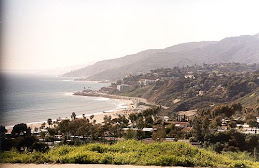




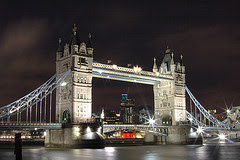
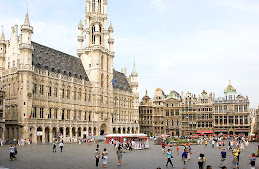



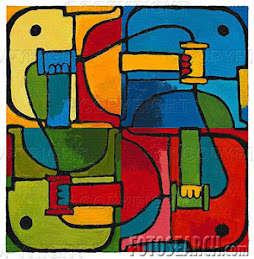
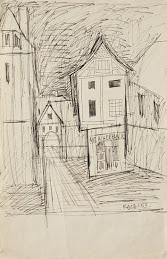
Don't put the key to your
happiness
in someone else's pocket.
INTERFAITH

Informative Links
Bharat Raagini
Incredible : INDIA
Dil Hai Hindustani
Aana Hai Tou Aa
Jagte Raho
Behti Hai Ganga
Insaaf Ka Mandir
Los Angeles,USA

Sydney, AUSTRALIA

Himalayas, India

Swiss Alps

Eiffel Tower,Paris

Tower Bridge, London

Grand Place, Brussels

SUNRISE

Machu Picchu, PERU

Venice

Modern Art

Pencil sketch

Think about this;
Don't put the key to your
happiness
in someone else's pocket.